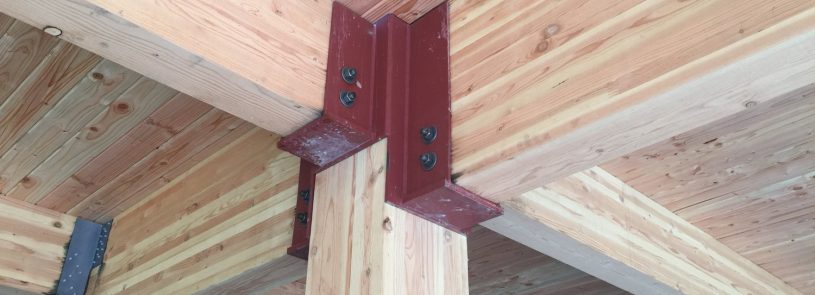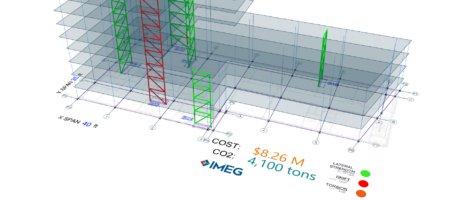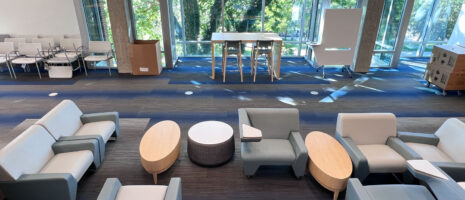Environmental advantages are the leading benefits of mass timber construction

Third in a series based on the IMEG executive guide, “Mass Timber 101: A Guide to the Hottest Sustainable Building Material.”
By Heather Heidenreich
Mass timber, comprised of multiple solid wood panels nailed or glued together, is an exceptionally strong and stable building material that boasts safety benefits for fire protection. But it’s also attractive to many architects and owners because it is a renewable resource with a low environmental impact, and it can create a warm and inviting aesthetic when left exposed. This also means fewer finishes are required in a building – a cost-saving benefit to owners.
The biggest benefit of mass timber construction comes from its environmental advantages, which include:
- Less embodied carbon. Compared to concrete and steel, mass timber has one-fourth the embodied carbon — the CO2 emitted during the manufacture, transport, and construction of building materials, as well as in a building’s end-of-life phase. This is because mass timber is a lighter material that costs less to transport and is less energy intensive. In addition, using mass timber as a flooring material instead of concrete (where most of a building’s carbon resides) can make a huge impact on lowering the building’s overall carbon footprint.
- Sequestration of carbon. Wood and other biobased materials also have the ability to sequester carbon, or in other words, capture and store carbon dioxide. This sequestered carbon, in addition to the lower initial embodied carbon, can create a net negative for the carbon consumption of a mass timber or wood-framed structure. Taking advantage of the full life cycle of mass timber can reduce the amount of CO2 in the atmosphere with a goal of reducing global climate change.
- Sustainable resource. If the life cycle of timber growth and harvest is managed intentionally, it’s possible to reduce the environmental impact of building with mass timber even further. For example, the average rate of harvest for all of Washington state’s commercial forestland is 1.1 percent, which means that for every acre harvested, there are nearly 99 acres of new forest growing, according to Forests & Fish Law. As shown in the accompanying illustration, the process of producing new timber requires careful and intentional forest management.
Though this sustainable forestry cycle shows a promising outlook for mass timber construction, it’s important to realize the other environmental factors involved in the entire manufacturing and building process. Yes, mass timber is a renewable resource, but the production process does emit carbon dioxide, as it takes energy to cut down forests, manufacture the raw materials into lumber ready for building, and transport these materials to the site. However, when compared to other building materials, mass timber still results in lower overall carbon emissions.
There are some limiting factors to using mass timber – fire ratings requiring the wood materials to be covered; closer grid spacing; the need for a concrete topping on the floor panels (and potentially still requiring steel or concrete for the lateral systems); and deforestation concerns.
Despite these limitations, mass timber continues to be a cost-effective and sustainable choice. As more owners, designers, and contractors understand mass timber’s contributions toward sustainable goals, its use will continue to expand.
Also in this series:
- Mass Timber: Each type offers unique benefits
- Code changes offer building owners much more flexibility
- Mass Timber: How far will your dollar stretch?
- Is mass timber right for your project?
For more information, download a copy of the IMEG executive guide, “Mass Timber 101: A Guide to the Hottest Sustainable Building Material.”












